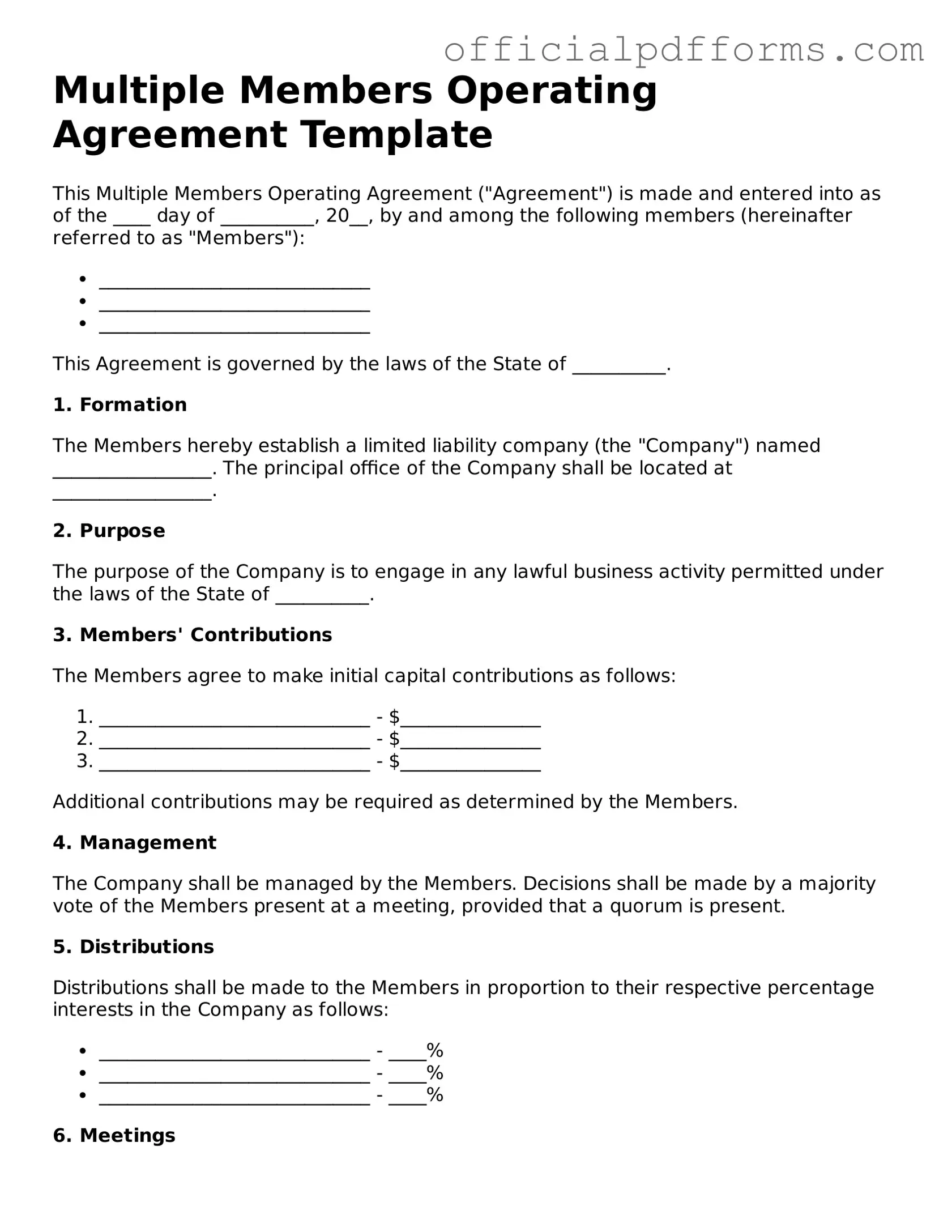Valid Multiple Members Operating Agreement Document
A Multiple Members Operating Agreement is a legal document that outlines the management structure and operational procedures for a business with multiple owners. This agreement helps clarify the rights and responsibilities of each member, ensuring smooth business operations. To get started, consider filling out the form by clicking the button below.
Access Form Online
